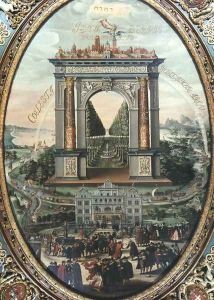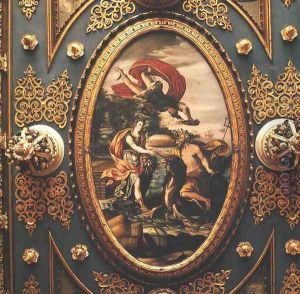Izaak van den Blocke Paintings
Izaak van den Blocke was a Flemish-born artist who played a significant role in the cultural and artistic landscape of the late 16th and early 17th centuries, particularly within the region that is now modern-day Poland. Born in 1570 in Mechelen, in the Spanish Netherlands (present-day Belgium), van den Blocke moved to the Polish-Lithuanian Commonwealth where he spent the majority of his career. His move was part of a larger migration of skilled artists and craftsmen from the Low Countries to Poland, a country that was experiencing a golden age of artistic patronage under the reign of the Vasa kings.
Van den Blocke came from a family of artists, which greatly influenced his career path. His father, Willem van den Blocke, was a noted sculptor and architect, which provided Izaak with early exposure to the arts and crafts. This familial background, combined with the vibrant cultural atmosphere of the Polish-Lithuanian Commonwealth, helped shape his artistic vision and output. Van den Blocke is primarily known for his work as a painter, although his skills extended into other realms such as sculpture and architecture.
In Poland, van den Blocke became associated with the court of King Sigismund III Vasa, receiving commissions that allowed him to express his artistic talents and contribute to the flourishing cultural scene. His works often reflected the Mannerist style, characterized by artificiality, grace, and elegance, which was prevalent in Europe at the time. Van den Blocke's contributions to religious and secular art include altarpieces, portraits, and decorative schemes for buildings. Among his notable works are the decorations for the Royal Castle in Warsaw and the Wawel Castle in Kraków, which are considered significant achievements in the Polish Renaissance.
Despite the prominence of his work and his contribution to the artistic heritage of Poland, Izaak van den Blocke's name is not as widely recognized today as some of his contemporaries. However, his legacy lives on in the art and architecture that continue to define the historical landscapes of Warsaw and Kraków. Van den Blocke's life and career offer insight into the cultural exchanges between the Low Countries and Poland during a vibrant period of artistic achievement. He died in 1628 in Gdańsk, leaving behind a body of work that remains appreciated by art historians and enthusiasts alike.

